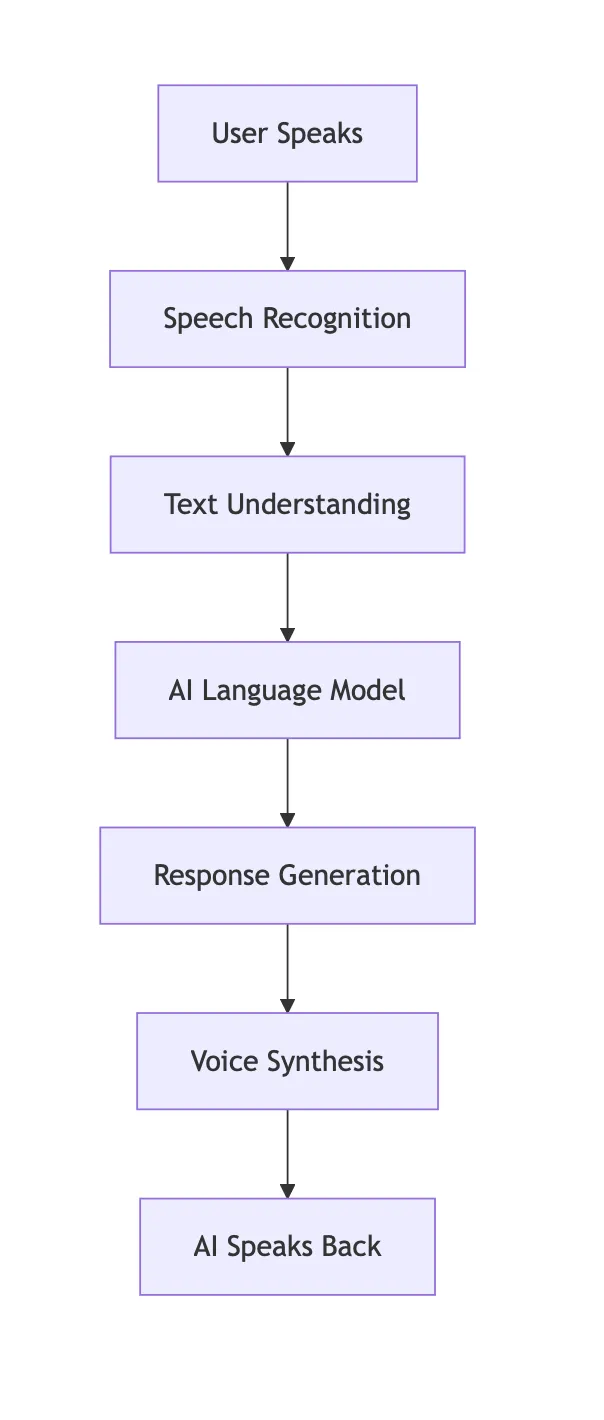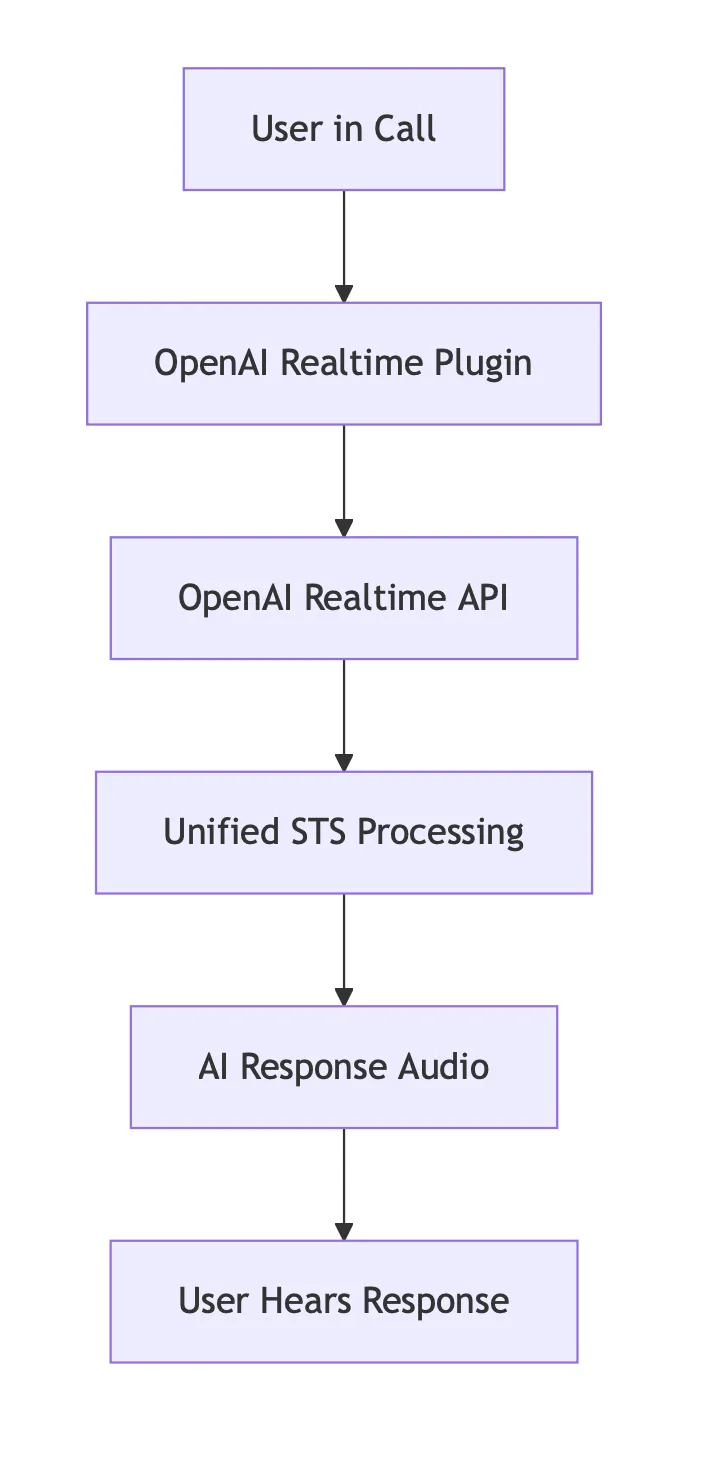Speech To Speech (STS)
Speech-to-Speech (STS) is the ultimate conversational AI experience—it listens to what you say, understands it, thinks about a response, and then speaks back to you naturally. STS combines speech recognition, natural language processing, and text-to-speech synthesis to create real-time conversational interfaces that enable hands-free, voice-driven interactions between users and AI systems.
How does speech to speech work?
STS creates a complete conversation loop that mimics human interaction. Here’s what happens during a typical STS interaction:
Listen: An AI speech recognition model captures your spoken words and converts them to text.
Understand: An AI language model (like GPT-4) analyzes the text to understand meaning, context, and intent.
Think: The system generates an intelligent response based on your input, conversation history, and configured personality.
Speak: An AI voice synthesis model converts the response text into natural-sounding speech.
Respond: The digital assistant speaks back to you, completing the conversation loop.

How does it work with Stream?
The Stream Python AI SDK simplifies this entire process by providing a unified system that handles the conversation flow seamlessly within your calls. Instead of building complex pipelines that connect multiple services, you get everything you need in one integrated solution.
Here’s how it works in your Stream calls:
Choose Your AI: Pick from powerful AI models like OpenAI’s GPT-4o for intelligent, context-aware conversations.
Configure Personality: Set up how your AI should behave—friendly assistant, professional advisor, creative collaborator, or any other persona you want.
Start Conversations: Users can simply start talking, and your AI will listen, process, and respond naturally through the call.
Real-time Interaction: The entire conversation happens in real-time, with minimal delay between what users say and how the AI responds.
Seamless Integration: Everything works within your existing Stream call—no separate audio channels or complex routing needed.

Worked example
Let’s walk through a real-world scenario to see how STS creates magical conversational experiences.
Imagine you’re building a virtual meeting assistant that helps teams stay organized and productive. Here’s how STS makes this possible:
The Scenario: A team meeting where the AI assistant helps manage the agenda and take notes.
What Happens:
The meeting starts, and someone says “Hey assistant, can you help us stay on track today?”
The AI responds naturally: “Of course! I’m here to help. I can take notes, track action items, and keep us on schedule. What’s on the agenda today?”
A team member says “We need to discuss the Q3 budget and plan the product launch.”
The AI processes this and responds: “Great! I’ll create agenda items for budget discussion and product launch planning. I’ll also track any decisions and action items we make. Should we start with the budget?”
Throughout the meeting, the AI can interject with helpful reminders: “We have 10 minutes left for the budget discussion. Should we move to the product launch planning?”
The Result: Instead of a passive note-taker, you have an intelligent meeting participant that actively helps the team stay organized, on track, and productive—all through natural conversation.
This is just one example—STS can create AI agents for customer service, education, entertainment, or any domain where natural conversation adds value.
What can you do with it?
The possibilities with STS are truly exciting! Here are some of the most compelling ways you can use it to create intelligent, conversational applications:
Virtual Assistants and Agents
Create AI assistants that can handle complex conversations, answer questions, and provide personalized help. Build virtual customer service agents, personal assistants, or specialized advisors for any domain.
Interactive Education and Training
Develop AI tutors that can explain concepts, answer student questions, and provide personalized learning experiences. Create interactive training programs that adapt to individual learning styles and pace.
Customer Support and Service
Build AI agents that can handle customer inquiries, troubleshoot problems, and provide support 24/7. Create conversational interfaces that feel human and can handle complex customer needs.
Entertainment and Gaming
Create AI characters that can engage in natural conversation, tell stories, or provide interactive entertainment experiences. Build games with AI companions that respond to player input naturally.
Healthcare and Wellness
Develop AI companions that can provide health information, answer medical questions, or offer emotional support. Create accessible healthcare interfaces that work through natural conversation.
Creative Collaboration
Build AI partners that can help with brainstorming, creative writing, or problem-solving. Create collaborative tools that feel like working with an intelligent colleague.